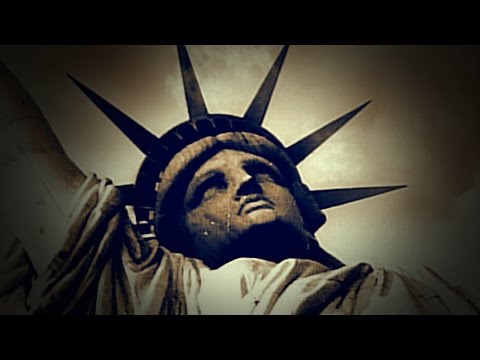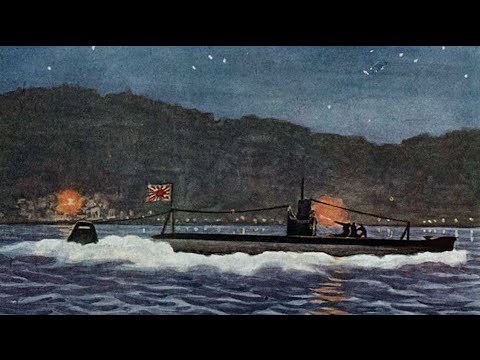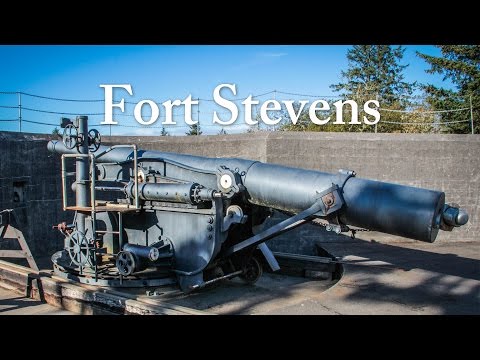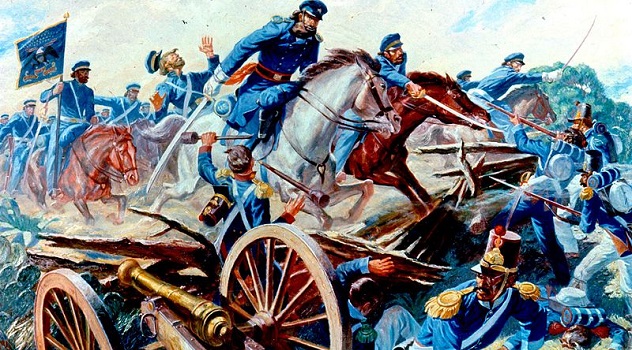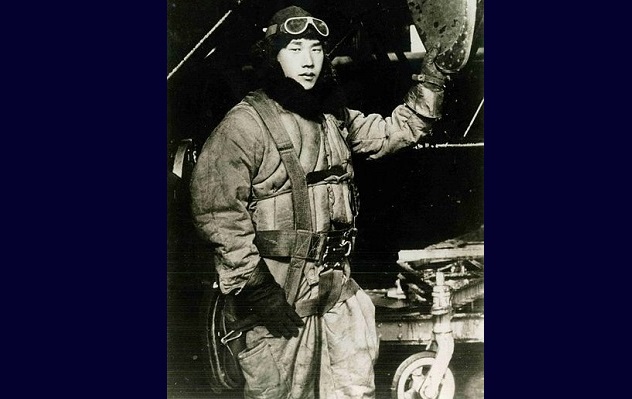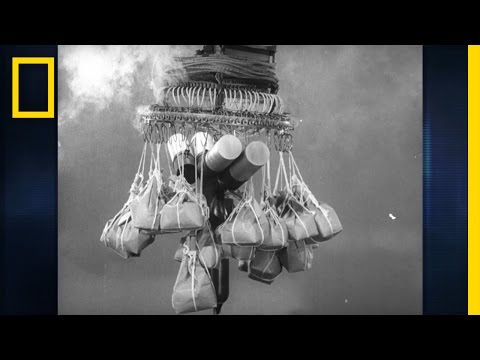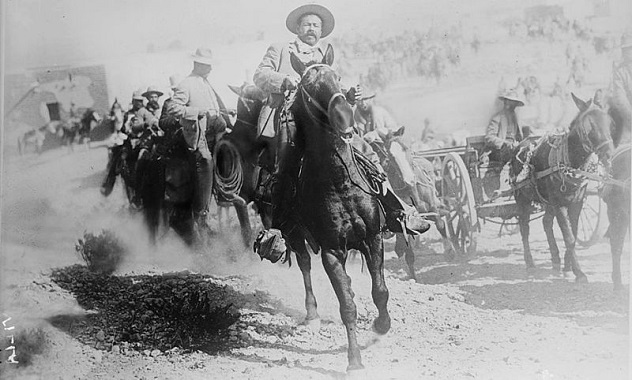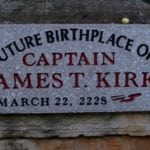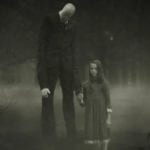10 Battle Of Ambos Nogales
When people think of World War I, they usually assume the fighting never reached the American continent. However, as the war neared its end, fighting between Mexican and US forces erupted along the border. The battle occurred in Ambos Nogales, a city split down the middle by a wide boulevard. Half of the town was in Mexican territory, and the other half was in US territory. (The Spanish word ambos actually means “both.”) Relations between the two countries were already tense due to the Zimmerman Telegram, an intercepted communique between the German and Mexican governments, which enticed Mexico to attack the US. And in August 1918, American intelligence services reported a buildup of Mexican soldiers and armaments on the Mexican side of Nogales. Naturally, this made American troops incredibly nervous, and things only got worse on August 27. On this particular day, a Mexican named Gil Lamadrid attempted to cross the border from the US side. He was carrying a large parcel through Nogales when US customs officials ordered him to stop. They wanted to examine the package, but then Mexican officials began telling Gil Lamadrid to cross the border immediately. In the confusion, a US soldier raised his rifle to threaten Gil Lamadrid. And that’s when gunfire erupted. Nobody knows who fired the first shot, but suddenly bullets were flying from both sides. Mexican citizens grabbed their rifles and started shooting at the American soldiers. Ready to fight, the US 10th Cavalry (made of “Buffalo Soldiers”) charged across the border and began fighting in the streets. The battle soon spread into the American side. The 35th Infantry brought in machine guns to combat Mexican troops, and they soon captured the hills around the city. Felix Penalosa, the mayor of Mexican Nogales, attempted to wave a white flag of surrender, but he was fatally shot by American soldiers. The death of the mayor served as a wake-up call for both sides. Mexican and US commanders gradually stopped the fighting, and the Battle of Ambos Nogales eventually came to an end.
9 Black Tom Explosion
Black Tom was an island in the New York Harbor that acted as a munitions depot for the Allies during World War I. In 1916, the United States still hadn’t entered the war, ostensibly keeping a policy of isolationism. However, they were more than willing to offer monetary and material support for the Allied nations, and most of the munitions on Black Tom Island made their way over to Great Britain. This made the small island a key target for German saboteurs. On the early morning of July 30, 1916, a huge explosion rocked the island, with tons of explosives going up in flames. People 145 kilometers (90 mi) in every direction felt the blast. Some people even felt it as far away as Philadelphia. The explosion rocked the East Coast with the equivalent force of a 5.5-magnitude earthquake. Plate glass windows in Manhattan buildings shattered. The Statue of Liberty took $100,000 worth of damage. Authorities evacuated immigrants off nearby Ellis Island, and a cloud of smoke and ash filled the sky. At the time, nobody knew what caused the explosion. Years passed without any conclusive evidence as to whether the explosion was an accident or an act of sabotage. Decades later, investigators revealed the culprit was the German ambassador to the United States, Count Johann von Bernstorff. Before the explosion, he helped German saboteurs attain fake passports. These saboteurs got jobs on Black Tom Island and used incendiary “pencil bombs” to ignite the munitions. Although the explosion didn’t cause too much damage outside the island, the Statue of Liberty’s torch has remained closed to the public since the attack.
8 Bombardment Of Ellwood
During World War II, the Japanese fought hard against the United States. They conducted several well-known attacks on the country, including the bombing of Pearl Harbor and the Aleutian Island Campaign in Alaska. However, the Japanese were also active on America’s West Coast, and in 1942, they launched a submarine attack near Santa Barbara, California. Japanese submarines were prowling about in the Pacific right after Pearl Harbor. They made strikes near the California coast, and several small skirmishes broke out between subs and transport ships. Commander Kozo Nishino, the skipper of the I-17, decided to make a strike against America’s oil fields to disrupt fuel production. So in February 1942, he brought the I-17 right off the coast and surfaced, cannon ready to fire. The Japanese gun crew trained their only cannon on the bright coastline lights of the Ellwood oil field. They first aimed for the aviation fuel tank containers, but they barely did any damage. Wild shots fell all over the place, damaging oil derricks, the pier, and even a nearby ranch. Ultimately, there was little destruction, but it was a shocking psychological blow to the Californians. Even today, no one knows exactly why Nishino decided to attack the oil field. One popular story is that he visited California before the war and walked down the beach near Ellwood. Seeing a prickly pear cactus, Nishino decided to take a cutting, but he slipped and fell on the sharp plant. Dock workers laughed at the injured Japanese captain, and legend states this embarrassment caused Nishino to have a burning hatred against the oil fields.
7 Operation Pastorius
During World War II, the Germans were once again interested in conducting acts of sabotage in the United States. Influenced by the Black Tom explosion, the Germans attempted to recreate their success. To do this, they organized Operation Pastorius, a failed attempt to wreak havoc on the continental US. German Abwehr intelligence agents had already infiltrated the United States by 1942, but the planners of Operation Pastorius wanted to cull new saboteurs from Germans who’d previously lived in America. Agents found eight Germans who were on board with the plan. Two of them were American citizens. The future saboteurs trained to hit various targets in the US, such as the hydroelectric plants at Niagara Falls and various railroad hubs along the East Coast. Each saboteur had fake documents for travel, and they were given the freedom to conduct whatever acts of terror they saw fit. In June 1942, a German submarine sailed up the New York coast and dropped off explosive supplies and four saboteurs. Another submarine dropped off a second team in Florida. However, the mission started falling apart from the very beginning. American authorities learned about the saboteurs after the Coast Guard picked up one of the Germans. This agent, George Dasch (pictured above), had decided to defect once he landed in the US. He then renounced Nazi Germany and turned himself in to the FBI. Together with Dasch, the authorities arrested the other saboteurs . . . but they still tried Dasch for espionage. Fortunately for the United States, the Nazi mission was uncovered before the Germans could do any real damage.
6 Attack On Orleans
Throughout World War I, German U-boats were a constant menace to the US coastline, forcing the country to invest in coastal defenses after submarines sank American ships. And in the summer of 1918, the United States was forced to defend the East Coast against German naval attack. On July 21, the submarine U-156 surfaced in the middle of Cape Cod, near the town of Orleans, Massachusetts. Immediately, the crew began shelling the coast, even firing at a nearby tugboat. While the tugboat sank, it’s unclear how much damage was caused on shore. Shells fell on unoccupied parts of the beach, and citizens quickly alerted military and police authorities, who came to the aid of the besieged city. The United States Life-Saving Service even launched a rowboat to rescue the tugboat sailors, rowing out into the harbor while under heavy fire. At the same time, Navy airplanes began to drop loads of TNT on the German submarine. Realizing they’d lost the advantage, the crew of the U-156 dove and sailed north, evading the enemy airplanes. The Americans were unable to sink the marauding U-boat, and it disappeared into the ocean. Besides the oddity of the attack, this event is unique because it was the first time United States Naval pilots engaged a ship in the western Atlantic.
5 Bombardment Of Fort Stevens
Not content with just shooting up California oil fields, the Japanese also attacked Oregon during World War II. In June 1942, the commander of the Japanese submarine I-25 prepared to make a strike against the Beaver State. The target was Fort Stevens, a fortification on the Columbia River that dated back to the American Civil War. Amazingly, Fort Stevens never received upgraded artillery and still relied on 19th-century weaponry. On June 21, the I-25 opened fire on the fort, trying to take out its batteries. The commander of Fort Stevens quickly realized what was happening and ordered a complete blackout of the fort. Even though the men were eager to shoot back, the commander refused to let them fire the cannons. With no lights or returning fire, the Japanese gunners were unable to visually acquire the target, and most of their shots missed the fort itself. Instead, the Japanese damaged a key symbol of the United States, as most of the shells landed in a nearby baseball field. Other shells cut through telephone wires, causing the most damage of the attack. Training aircraft in the area spotted the I-25 during the shelling and called in a nearby attack bomber. Realizing they couldn’t win this fight, the I-25 retreated back into the Pacific. Overall, the mission was extremely ineffective, but it fueled invasion panic along the West Coast, stirring up fears which lasted throughout the war.
4 The Thornton Affair
In the 1840s, the United States annexed Texas into its territory. While the citizens of the US were eager to gain new land for their growing country, Mexico wasn’t thrilled with the decision. Mexico was the other major power in North America, spreading across what is now the western United States. When Texas became part of the US, Mexico still laid claim to territory near the Rio Grande. The only problem was that the US government was also claiming this particular piece of property. US soldiers were sent to Texas as political tensions with the Mexicans increased. President James K. Polk ordered his troops to camp near the Rio Grande, causing the Mexicans to become leery of a possible attack. Instead of losing the advantage, a Mexican infantry force crossed the river to attack the American soldiers. Future president Zachary Taylor was in command of the US troops, and he realized that a Mexican attack was imminent. Needing intelligence on what was happening, Taylor sent out a small contingent of scouts on horseback. As they explored the Texas countryside, the scouts ran right into middle of the Mexican forces. The 70 Americans, commanded by Seth Thornton, were completely overwhelmed by a force of about 2,000 Mexicans. In the brief skirmish that followed, 16 scouts died. After they returned and reported the incident, outrage soon followed. Congress declared war on Mexico, citing the fact that American blood been spilled on American soil. Modern historians debate whether the battle actually took place in US territory, but what matters is that the skirmish sparked the Mexican-American War, which in turn shaped the history of the western United States.
3 Lookout Air Raids
After blowing up the aforementioned baseball field, the I-25 Japanese submarine returned to Oregon shores later in 1942. This time, though, it had a different attack plan. During its operations, the I-25 carried a small E14Y floatplane bomber in its hangar. Instead of using cannons to attack, the crew of the I-25 would use this little bomber to drop incendiary bombs into the Oregon forest with the hope of creating a massive forest fire. On the morning of September 9, the I-25 surfaced off Cape Blanco and launched their E14Y. The plane carried two bombs, and the pilot circled Mt. Emily, looking for a suitable place to drop his payload. During the flight, Howard “Razz” Gardner sat on Mt. Emily in a fire lookout tower. He watched the airplane circle the mountain and drop bombs. When a plume of smoke erupted from the forest, Razz called other firefighters to extinguish the blaze before it got out of hand. The bombs only created a few scattered fires, and an earlier rain storm prevented the flames from spreading. Thankfully, the firemen were able to save the forest. Oddly enough, Nobuo Fujita (pictured above), the pilot of the E14Y, became something of a local hero in Brookings, Oregon, a town near the bomb site. After the war, Fujita visited Brookings and became an informal ambassador of peace. During multiple visits over the years, he dedicated a walking trail and planted a tree as a symbol of friendship. Right before his death in 1997, the residents of Brookings made Fujita an honorary citizen.
2 Fire Balloon Attacks
World War II saw the first major bombing operations during wartime. The Allies were especially ferocious in their airborne attacks, leveling both Japan and Germany. And near the end of the war, this was becoming a big problem for Japan. American bombers could hit their factories and civilian populations, but the Japanese didn’t have bases close enough to the US to hit them back. Thus, in 1944, they launched a daring operation to cause some serious damage to their enemies. During the war, the Japanese did many high-altitude experiments, and they discovered a strong air current that crossed above the Pacific at approximately 9 kilometers (30,000 ft). This airstream ended on the West Coast of the US, so Japanese engineers got busy designing a large balloon that could travel through this current. Named the Fu-Go, the balloon carried an array of incendiary bombs. After it was released from Japan, the Fu-Go had a flight time of 30–60 hours, after which the balloon would lose altitude over the continental United States. The Japanese actually launched thousands of these balloons, and the floating firebombs landed in states ranging from Alaska to Arizona. A few balloons even made it as far as Michigan. American fighter pilots attempted to intercept the balloons, but they missed most of them. And while these weapons were relatively ineffective, one balloon did kill six Americans in Oregon. On May 5, 1945, Pastor Archie Mitchell was traveling through the hills with his pregnant wife and five children from their Sunday school. When the group reached a picnic spot, Mitchell let the children out and then went to park the car. While he was gone, one of the kids found a crashed fire balloon on the ground. The child touched it, and the bombs exploded, killing all five children and Elsie, the pregnant woman. Some balloons survived the war, with one being found by forest workers as recently as 2015. Fortunately, their encounter was not fatal.
1 Battle Of Columbus
Mexican revolutionary Pancho Villa was active along the United States border throughout the Mexican Revolution and during World War I. Villa constantly infuriated American authorities by conducting raids on trains and causing havoc on the border. However, his boldest move came in 1916 when he attacked the town of Columbus, New Mexico. A garrison of 600 troops was guarding Columbus, but bad information led Villa to believe that he had the advantage with his 400 soldiers. On March 9, 1916, his soldiers cut the border wire, and Villa led them into town. The Mexican attackers stormed through Columbus, looting houses and businesses. Civilians fought off the raiders as the US Army quickly mobilized to repulse Villa’s forces. Commanders organized their men into fire squads, and they even brought in machine guns to fight off the attackers. It soon became clear that the defenders had the upper hand, and realizing he’d lost the element of surprise, Villa ordered a retreat. The bandit managed to escape with his men . . . but at great cost. He lost nearly 100 troops during the attack. As for the US, 18 Americans lay dead, and parts of Columbus had burned down. Outraged, President Woodrow Wilson ordered a 6,000-man expeditionary force (commanded by General John Pershing) to enter Mexico and capture Pancho Villa. For a year, the Americans had the full cooperation of the Mexican government, but in 1917, Mexican authorities asked the expeditionary force to leave. While Villa managed to evade Pershing, the massive military response convinced the outlaw to never attack American territory again. Zachery Brasier writes.

